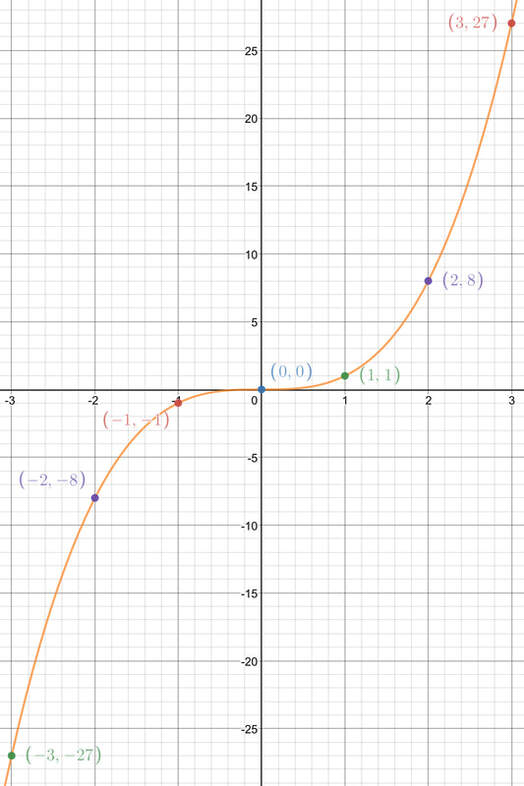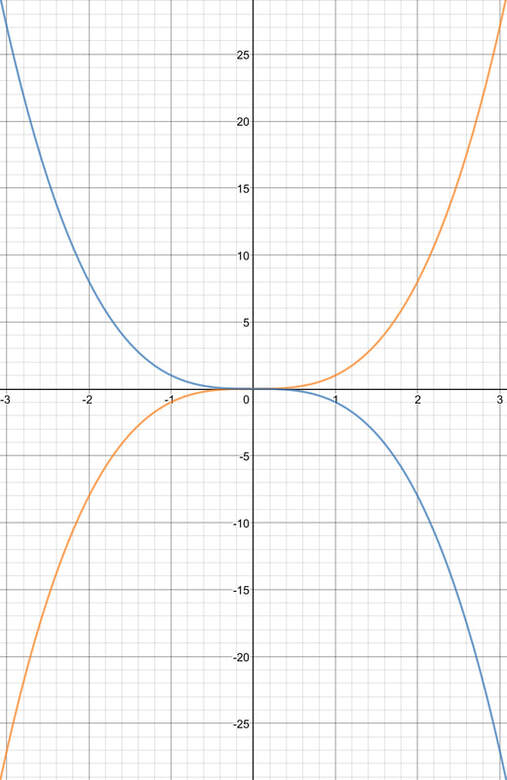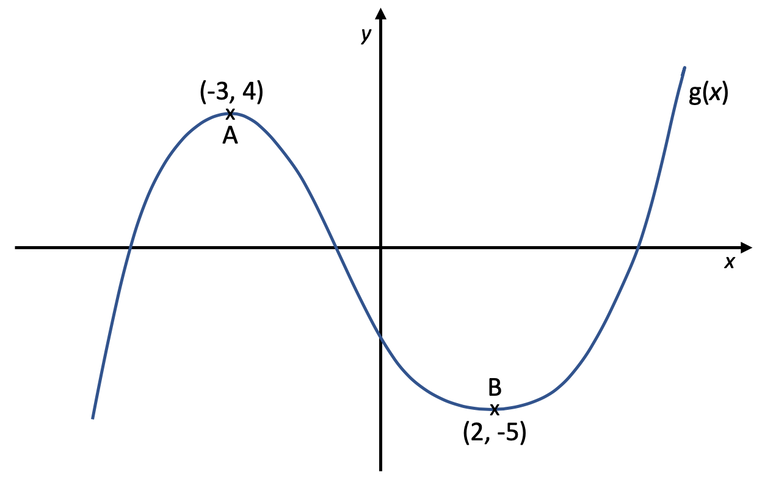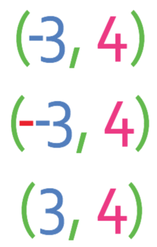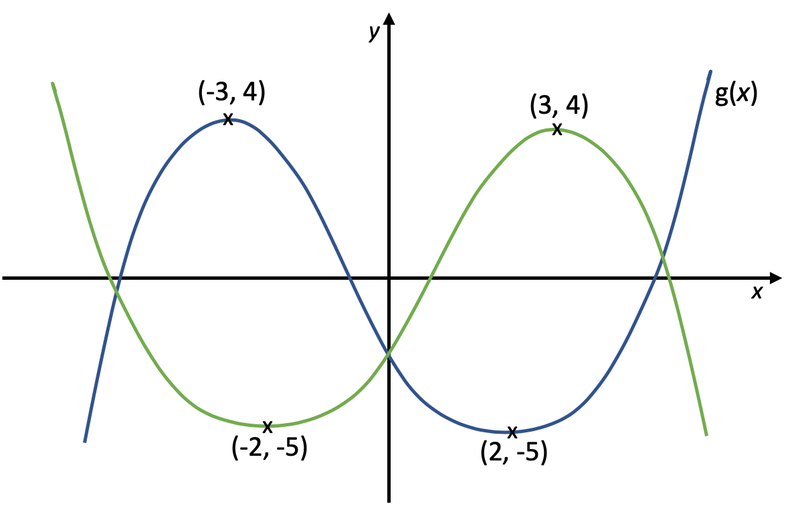Back to Edexcel Transformations of Curves (H) Home
2.9 F) Reflections in the y axis
2.9 F) Reflections in the y axis
A reflection in the y-axis occurs when we have a negative x inside the function.
Let’s suppose that we have the function h(x). This function is now reflected in the y-axis and we can write the reflected function as h(-x). The negative in front of the x on the inside of the bracket means that we need to multiply the value of x by -1 (change the sign of it) before we sub it into the function.
Let’s now develop this a bit more by having h(x) be the function:
Let’s suppose that we have the function h(x). This function is now reflected in the y-axis and we can write the reflected function as h(-x). The negative in front of the x on the inside of the bracket means that we need to multiply the value of x by -1 (change the sign of it) before we sub it into the function.
Let’s now develop this a bit more by having h(x) be the function:
I am going to plot this function for x values between -3 and 3.
A sketch of h(x) is given below.
We are now going to plot the function h(-x). Before we are able to cube the value of x we need to multiply it by -1 (change the sign).
The function of h(x) and h(-x) are shown on the graph below; h(x) is the orange curve and h(-x) is the blue curve.
From the sketch above, you can see that h(-x) is a reflection of h(x) in the y axis.
Working Out Point
We are able to obtain the coordinates of points when we have a negative x on the inside of the brackets in the function by multiplying the x coordinates by -1.
We are going to be looking at the function g(x) and a sketch of it is given below.
We are able to obtain the coordinates of points when we have a negative x on the inside of the brackets in the function by multiplying the x coordinates by -1.
We are going to be looking at the function g(x) and a sketch of it is given below.
There are two points of interest on the above function; point A and point B. Point A has the coordinates (-3, 4) and point B has the coordinates (2, 5).
Question: Sketch the function g(-x) and find the coordinates of A and B.
In order to find the coordinates of A and B, we multiply the x coordinate for each of the point by -1 (or change the sign).
Point A has the coordinates (-3, 4). The x coordinate for A is -3 and when we multiply it by -1, it becomes 3. Therefore, point A on the translated curve has the coordinates (3, 4).
Question: Sketch the function g(-x) and find the coordinates of A and B.
In order to find the coordinates of A and B, we multiply the x coordinate for each of the point by -1 (or change the sign).
Point A has the coordinates (-3, 4). The x coordinate for A is -3 and when we multiply it by -1, it becomes 3. Therefore, point A on the translated curve has the coordinates (3, 4).
Point B has the coordinates (2, -5). The x coordinate is 2 and then we multiply it by -1, it becomes -2. Therefore, point B on the translated curve has the coordinates (-2, -5).
The function g(x) and g(-x) are sketched on the curve below; g(x) is blue and g(-x) is in green.
The Rule for Working Out a Point
The rule for working out the coordinates of a point after it has been reflected in the y axis [e.g. f(-x)] is to multiply the x value by -1 (you change the sign of the x value). The y value remains the same.
The rule for working out the coordinates of a point after it has been reflected in the y axis [e.g. f(-x)] is to multiply the x value by -1 (you change the sign of the x value). The y value remains the same.



